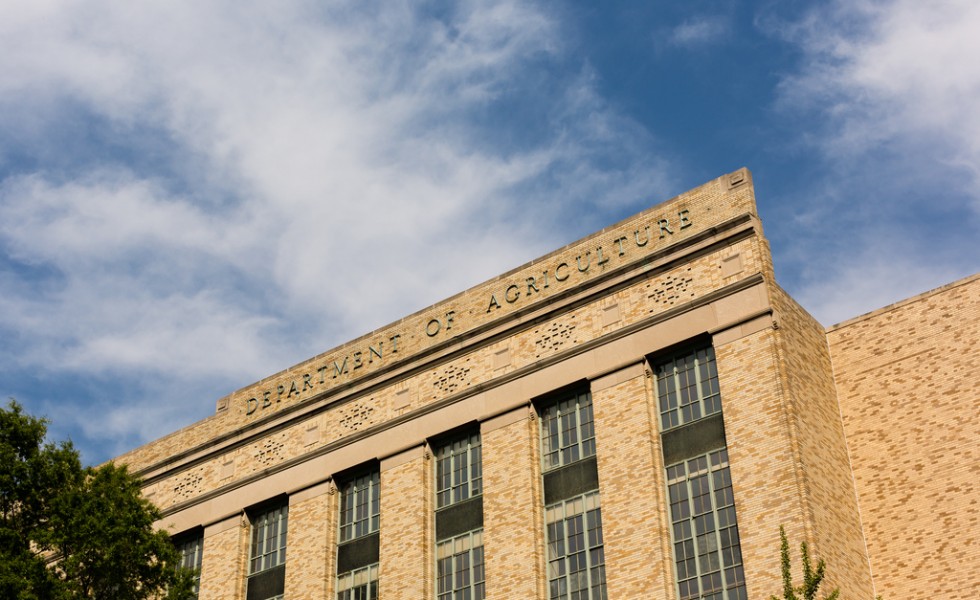Choose an Ag Secretary with Experience, Expertise, and Boldness
Posted on January 22, 2021

It’s a challenge to find one person with the combined skills of a farmer, rancher, forester, food aid administrator, tribal leader, attorney, economist, conservationist, miner, insurance expert, food scientist, and finance specialist to fill the about-to open job of the secretary of agriculture.
In fact, that person—described, in part, by the titles of the eight under secretaries and 11 specialist “offices” within the U.S. Department of Agriculture (USDA)—doesn’t exist.
Still, USDA boss is a plum job with excellent pay ($210,700 in 2019), medical benefits, a defined pension, and sweet perks like an office on the National Mall, invitations to White House parties, and first class travel to, well, anywhere.
But running USDA isn’t all state fairs and Farm Bureau conventions. It’s a daunting task to manage 33 agencies, 4,300 offices, and more than 100,000 employees while dealing with everything from soup to nuts.
Emphasizing soup and nuts isn’t accidental because the biggest program area within USDA doesn’t deal with farms, ranches, or forests. Instead, it’s nutrition assistance—by far.
How far? Intergalactically far.
According to its “FY 2021 Budget Summary” (if anything 112 pages-long can be called a summary), USDA will spend $98.9 billion of its $151 billion budget—65 percent—on its three biggest food assistance programs, the Supplemental Nutrition Assistance Program (SNAP), the National School Lunch Program, and the Women, Infants, and Children program, or WIC.
By contrast, it will spend $33.2 billion on “Farm, Conservation, and Commodity Programs” this fiscal year, or one-third of what SNAP, School Lunch, and WIC will cost.
Little wonder, then, why so many food advocates often mumble about renaming the Department of Agriculture to something like the Department of Food, Nutrition, and Agriculture.
Despite farm programs taking a back seat to assistance programs, six of USDA’s seven 2021 “strategic goals” have little-to-nothing to do with its biggest program and its biggest cost, food aid.
It’s not that the six—which include areas like farm production, ag exports, and rural development—aren’t important; they absolutely are. There is, after all, no life without food and little food without farmers, ranchers, and rural America.
Still, many of USDA’s current “strategic” goals sound like something out of the 1970s (“Maximize the ability of American agricultural producers to prosper by feeding and clothing the world.”) rather than a hard focus on how to sustainably grow more food in an infinitely more complex environment and increasingly competitive world market.
And that’s true whether or not you overlook USDA’s own “customer”—the favorite metric of current Secretary Sonny Perdue—numbers that show, at best, farm programs (like crop insurance, direct subsidies, etc.) impact about 5 million Americans every year while SNAP, the School Lunch Program, and WIC are used by a whopping 71.4 million Americans, most daily.
None of this comes as a surprise to farmers, ranchers, or most ag organizations that have fought to keep a “farmer” in charge of USDA despite rising consumer and food aid dominance.
Now, however, they face a change they’ve known was coming for decades. Congresswoman Marcia Fudge, a 20-year veteran of the House Ag Committee, an attorney and former prosecutor, the first Black mayor of Warrensville, OH, and a noted expert on child nutrition and food aid programs, is angling to be the next secretary of agriculture.
If government experience, farm policymaking, and expertise in USDA’s largest program area are any measures, Fudge is a highly qualified candidate. Any shortcoming on, say, the inner workings of crop insurance or the Forest Service, can be addressed as they have been by every past secretary: choosing area specialists as undersecretaries or deputy undersecretaries.
Will Marcia Fudge be the next secretary of agriculture?
On the face of it, she should be a shoo-in; her resume, expertise, and politics perfectly align with what USDA needs and what Joe Biden, the president-elect, preaches. It would, however, be a bold choice.
Are we as a nation and we in agriculture that bold?
© 2020 agcomm
Share This